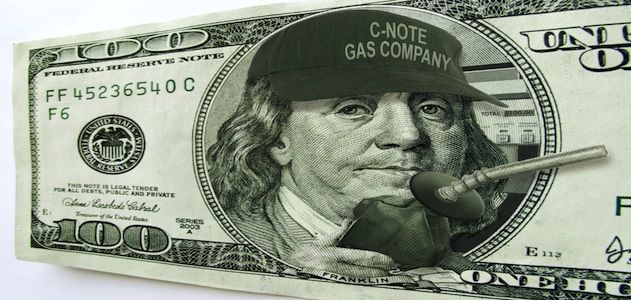Natural gas drilling wells are becoming a more frequent sight throughout the country. The "shale boom” is big business for gas companies and landowners alike. Advances in drilling and fracturing technology, also known as fracking, have made it easier to mine the natural gas reserves from previously inaccessible sources. In many cases, a shale filled with natural gas is mined underneath a populated neighborhood.
In some cases, the homeowner retains the rights to the subsurface estate on his or her property. The subsurface estate is the oil or gas that resides underneath the property. The gas companies pay handsomely to access the gas they couldn’t get to before.
But the proliferation of the wells and the increase in natural gas drilling in residential areas presents a unique set of problems for homeowners and mortgage bankers alike.
In a webinar titled, “Oil and Gas Exploration for Mortgage Bankers,” attorneys from Ballard Spahr discussed the shale boom and what impact it will have on the mortgage market going forward. Here are the highlights:
1. The shale boom is not close to being over
“This is not a short-term boom,” said Harry Weiss, of Ballard Spahr’s Environment and Natural Resources Group. "This is a many, many, many year process. Someday, somewhere, somehow you’re going to see it everywhere.”
2. Shale production is going to keep climbing
As additional states begin to allow drilling, shale production will continue to climb exponentially. The Marcellus shale, which stretches from Tennessee to upstate New York has seen production “skyrocket,” according to Weiss. “Marcellus production has enormous potential for growth,” he said. “New York state has not allowed drilling yet, but when it does, production will be off the charts.”
3. “North Dakota has become the Saudi Arabia of the United States”
Weiss cited the massive increase in drilling in North Dakota as a huge source of new wealth for North Dakota’s residents. “It’s not beyond credulity that these people may provide a different economic profile,” Weiss told the mortgage bankers.
“They’ll have the ability to pay down loans. You’re going to have different risk profiles.”
4. 3-5% of wells may have some environmental incident
“The chances of accidents occurring in these areas have increased,” Weiss said. Weiss cited the potential for polluted ground water, but said that he had not seen one case where hydraulic fracturing has been connected to polluted ground water. “When you’re thinking about lending on these properties, there are a lot of different possible outcomes other than a disaster,” he said.
5. It’s important to do due diligence to determine who owns the subsurface estate
In some cases, the property owner may not own the oil and gas estate. The surface and subsurface estates may have been separated over the course of the property’s history. Title research is key in these instances.
6. Oil and gas drilling negatively impact the secondary market
“The secondary market hasn’t caught up with the risk of these loans,” said Daniel McKenna, with Ballard Spahr’s Mortgage Banking Group. “The loans are actually low risk. But Fannie, Freddie, the FHA and the VA prohibit gas leases on their loans. There are a ton of different regulations that impact selling these loans on the secondary market.”
7. Should you lend in areas with fracking?
“I think your business is taking some risk,” Weiss said. “But oil and gas drilling has been going on for 150 years. It’s only become a larger issue since the hysteria has begun.”






